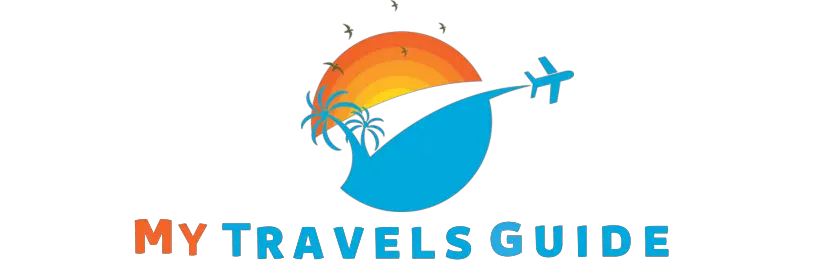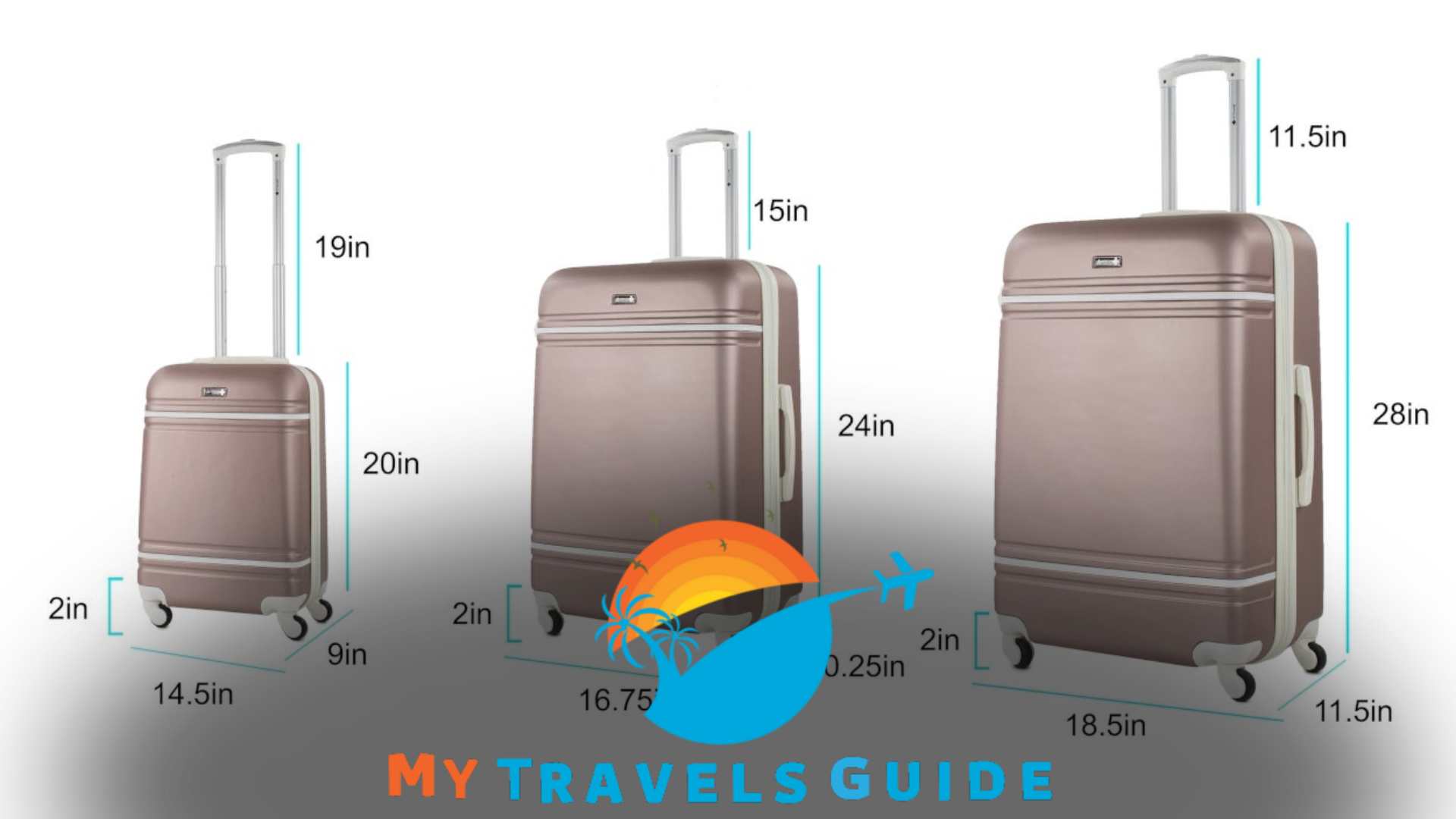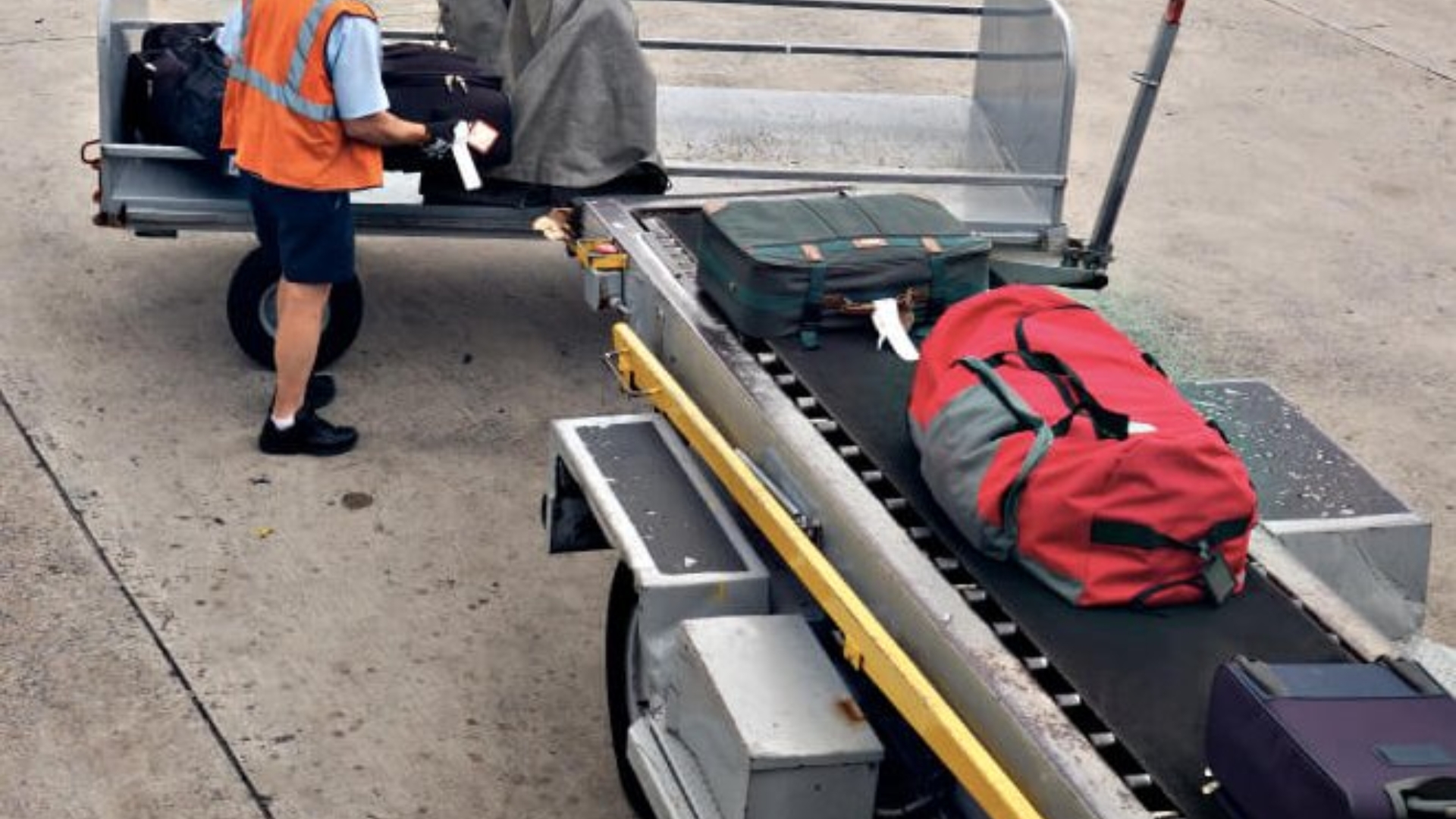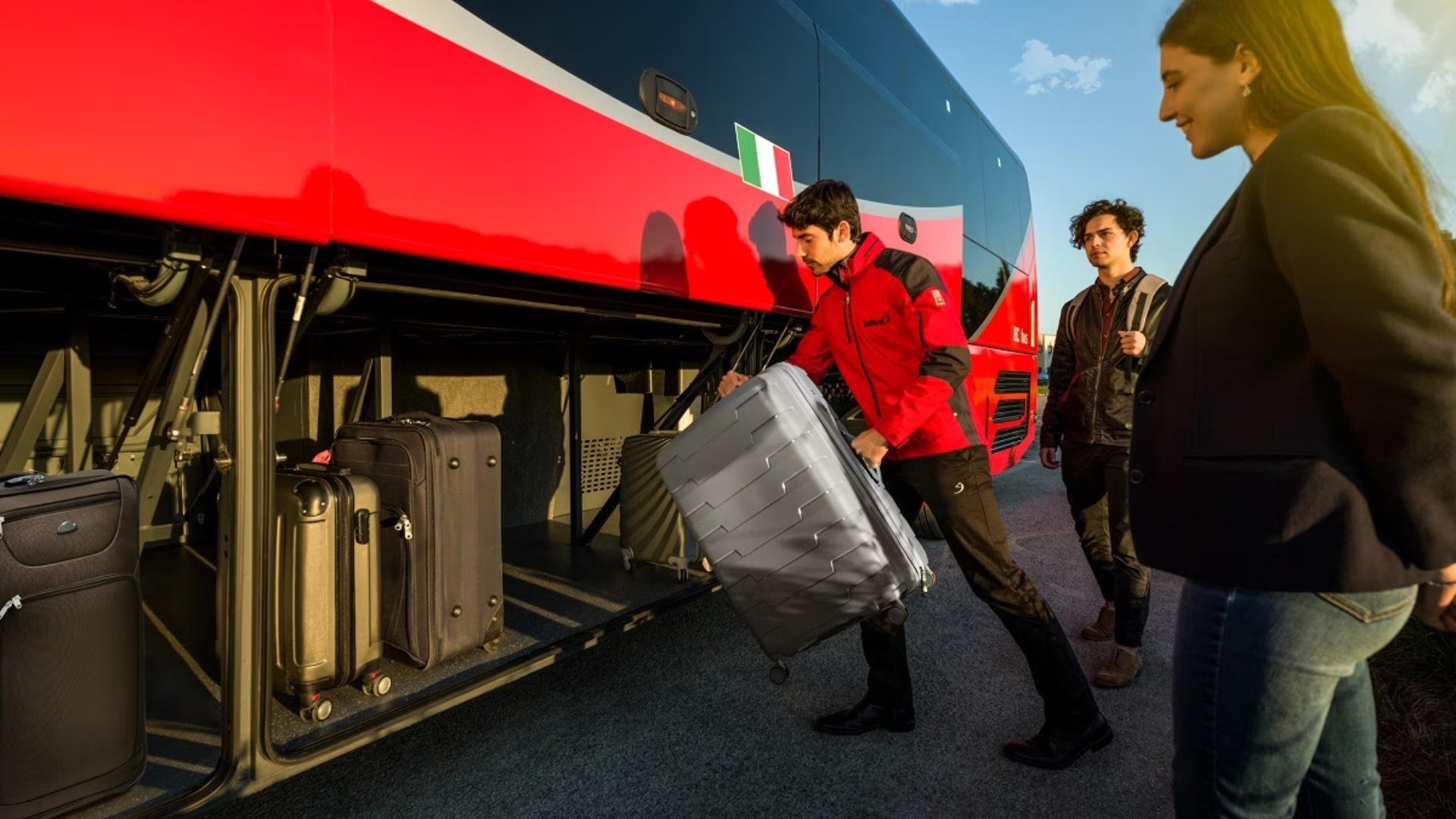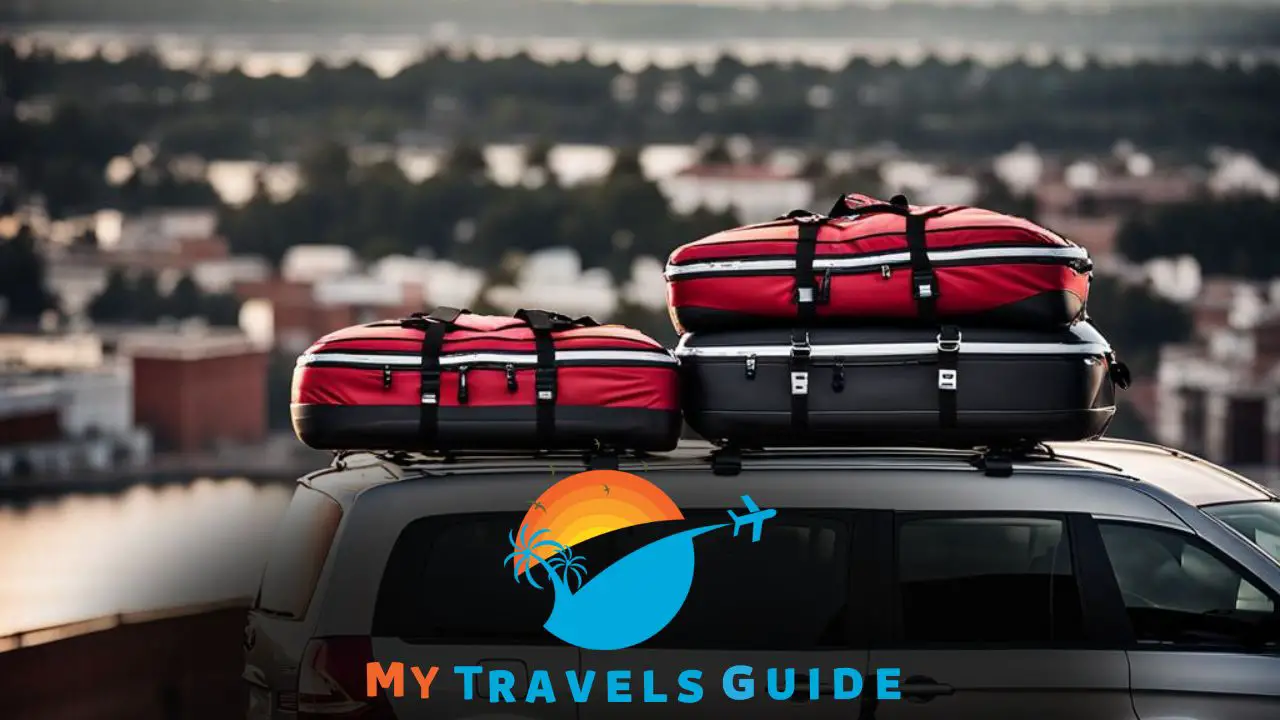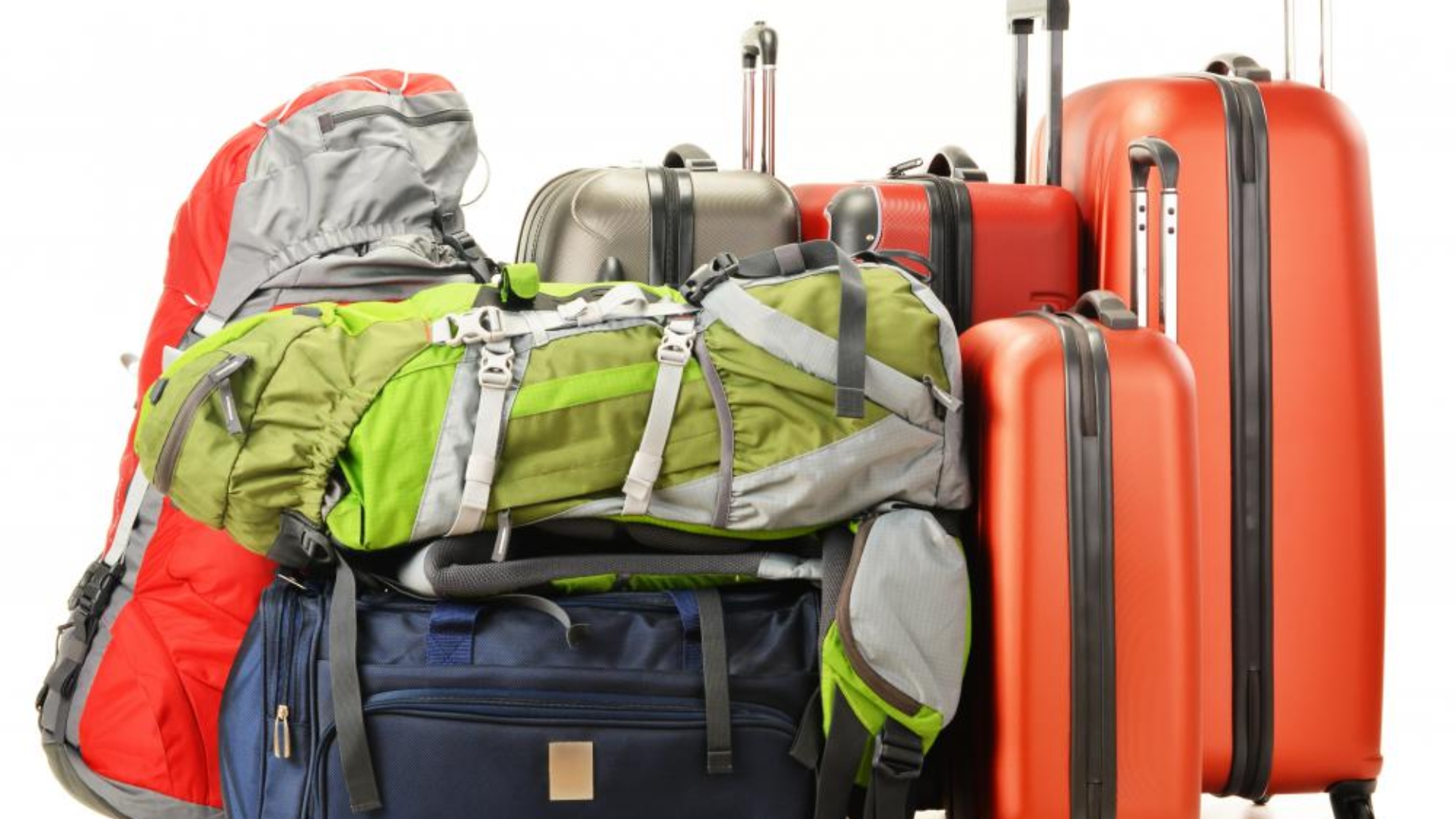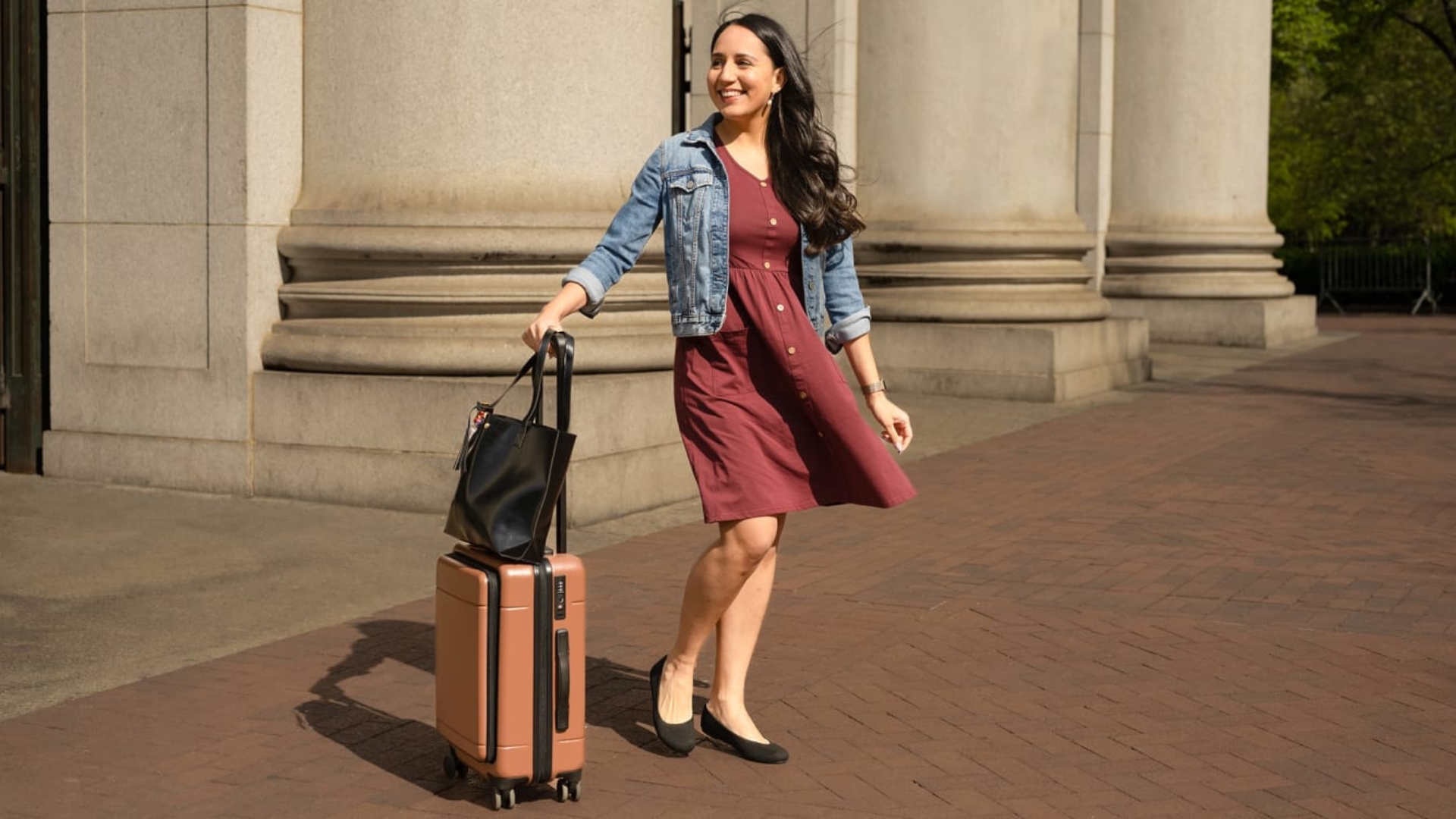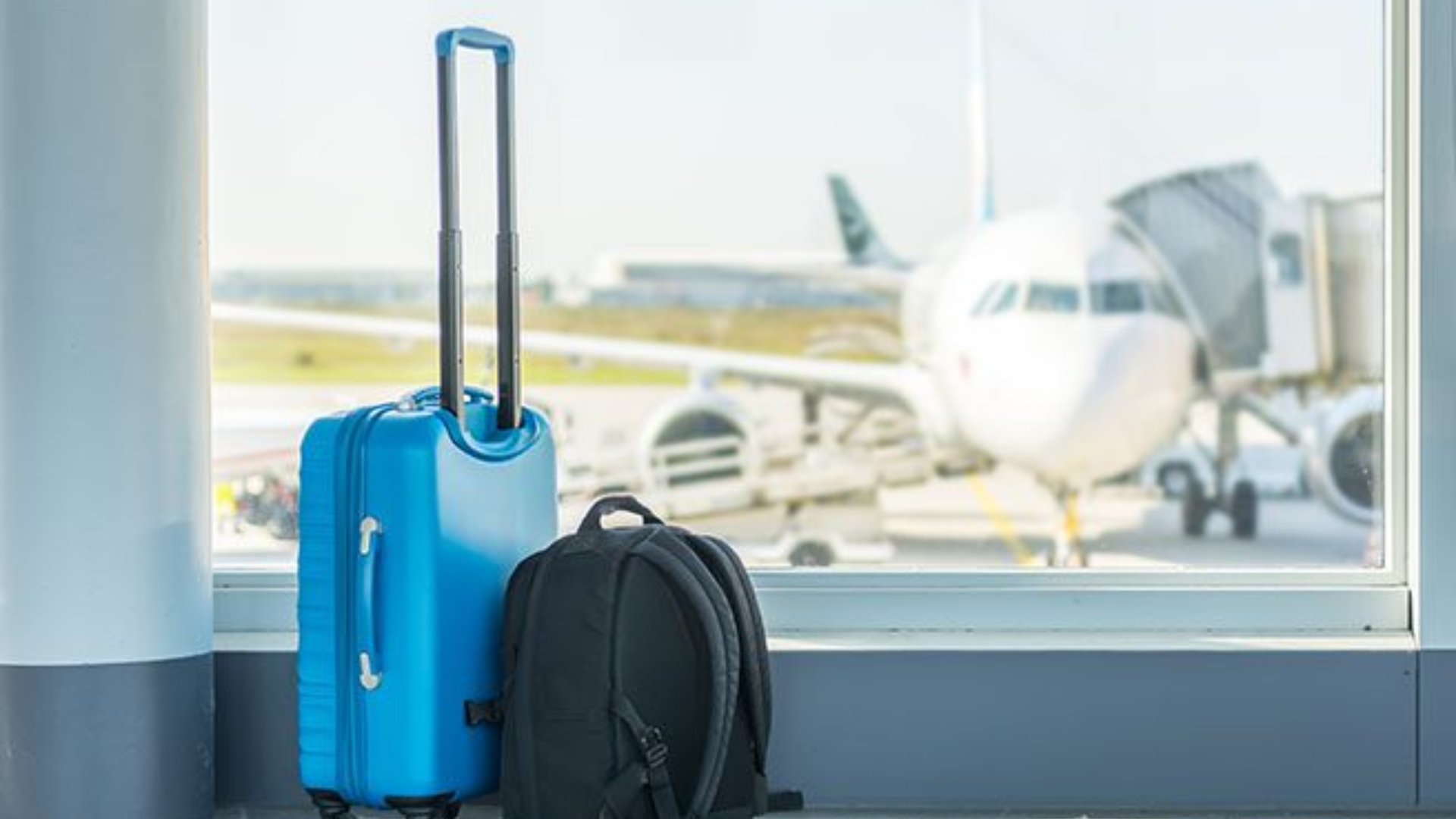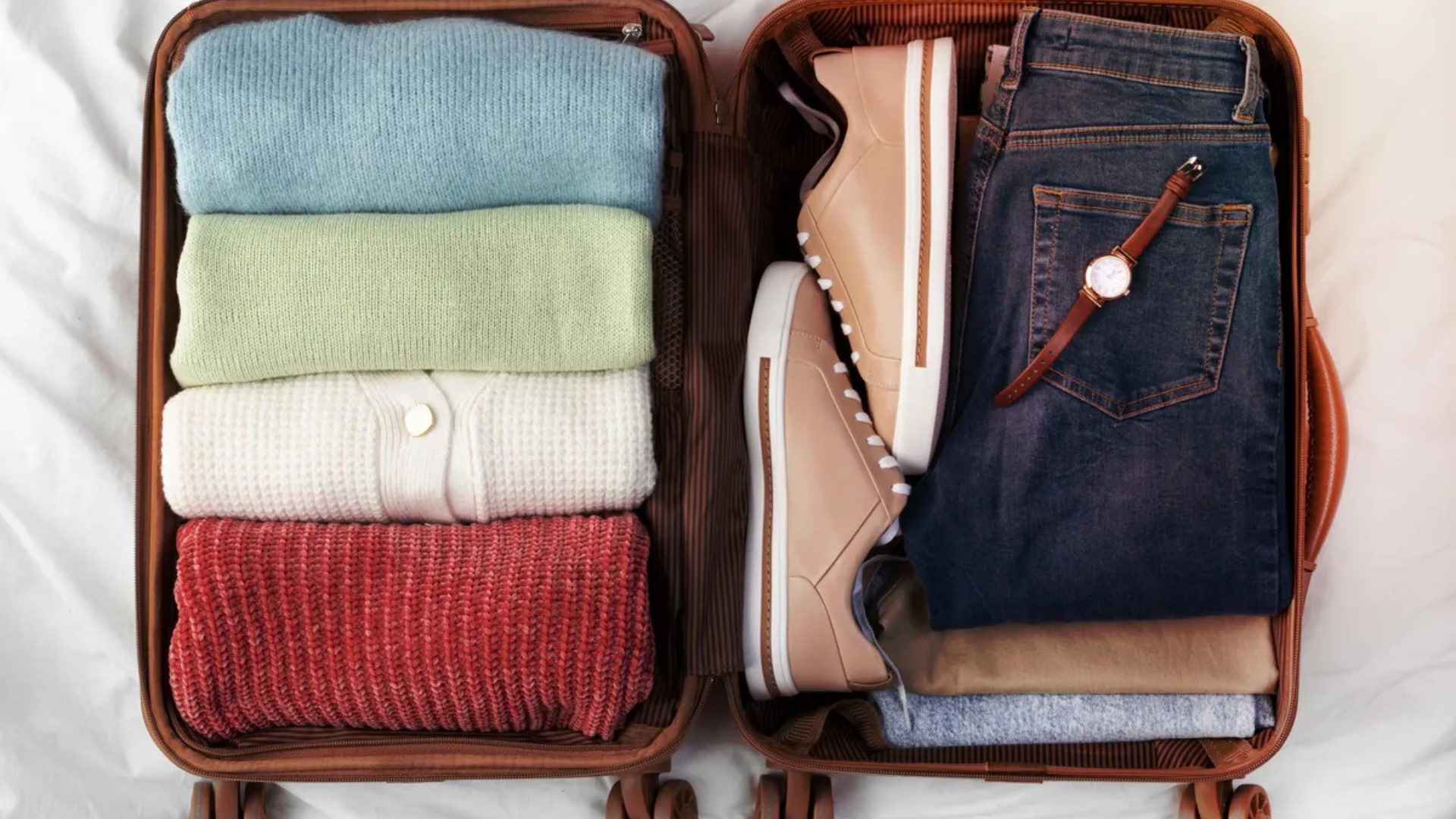In this article:
Are you planning a trip and wondering about the dimensions of your luggage? If you’ve encountered the term “62 linear inches” and are unsure how it translates to centimeters, you’re in the right place.
In this article, we will delve into the concept of 62 linear luggage inches and provide a comprehensive guide on converting it to centimeters. So, let’s dive in!
When traveling, knowing your luggage’s size and weight restrictions is crucial. Many airlines and transportation authorities use a unit of measurement called linear inches to determine the acceptability of baggage.
Understanding the concept of linear inches and how to convert them to centimeters will help you adhere to the guidelines and avoid inconveniences during your journey.
If you’re looking for the ideal travel gear, consider opting for ultra-lightweight luggage. Learn more about it in our guide on the perfect travel companion.
What is 62 Linear Inches of Luggage?
When discussing luggage size, the term “62 linear inches” often comes up, especially in the context of air travel. It is crucial to understand what this measurement means and how it impacts your travel experience.
Definition of Linear Inches
Linear inches measure the total sum of a suitcase’s length, width, and height. Airlines typically use this measurement to determine whether a piece of luggage meets their size requirements for checked baggage. The formula is simple: Length + Width + Height.
Why 62 Linear Inches?
The 62 linear inches standard is widely used by airlines globally. This measurement is considered the upper limit for checked luggage, ensuring that bags fit within the cargo holds of most commercial airplanes. Exceeding this size could result in additional fees or the bag being rejected.
Measuring Your Luggage
To measure your luggage, use a tape measure to find the length (from top to bottom), width (side to side), and height (front to back) of your suitcase, including any handles or wheels. Add these three numbers together to get the total linear inches.
Importance in Air Travel
Airlines enforce luggage size limits for several reasons:
- Safety: Properly sized luggage ensures safe and efficient loading and unloading of aircraft.
- Space Optimization: Airplane cargo holds have limited space, and standardizing luggage sizes helps maximize this space.
- Passenger Equity: Limiting luggage size ensures all passengers have fair storage opportunities.
Impact of Exceeding 62 Linear Inches
Luggage exceeding this size may incur extra fees. Some airlines have strict policies and may not accept oversized bags. Always check with your airline before traveling.
The Conversion Formula
To convert linear inches to centimeters, multiply the value by 2.54. The conversion factor of 2.54 represents the number of centimeters in one inch.
By applying this simple formula, you can obtain the equivalent measurement in centimeters.
How to Calculate 62 Linear Inches Luggage?
To calculate whether a piece of luggage is within the 62 linear inches limit, you must measure and add the bag’s length, width, and height. Here’s how to do it:
Measure the Dimensions
- Length: Measure the longest side of the luggage from end to end.
- Width: Measure the side of the luggage from one side to the other, perpendicular to the length.
- Height: Measure from the bottom to the top of the luggage (or the back to the front, depending on how it stands).
Include Handles and Wheels
Ensure to include any handles, wheels, or other protruding parts in your measurements, as these count towards the luggage’s total size.
Add the Dimensions Together
- Add the length, width, and height measurements. The total is the luggage’s linear measurement.
- For example, if your suitcase measures 27 inches long, 19 inches wide, and 16 inches high, the total linear inches would be 27 + 19 + 16 = 62 linear inches.
Compare Against Airline Limits
- Check if the total linear measurement is within the airline’s limit for checked baggage, often 62 linear inches.
Use a Luggage Measuring Tool
Some airports and stores selling luggage have tools for measuring the dimensions of a suitcase, which can be useful for a more accurate measurement.
Remember, the 62 linear inches limit is standard for many airlines, but it’s always best to check the specific restrictions of the airline you’re traveling with, as they can vary.
Wondering about the right luggage size for check-in? Our post on uncovering the ultimate dimensions explores the intricacies of the largest luggage size for check-in in centimeters.
Popular Luggage Sizes
Knowing the dimensions of your luggage is essential, as it helps you choose the appropriate bags for your travel needs. Here are some popular luggage sizes and their corresponding linear inch measurements:
- Small Carry-On: Typically up to 22 linear inches (56 cm).
- Medium Checked Bag: Ranging from 23 to 25 linear inches (58-64 cm).
- Large Checked Bag: Usually around 26 to 28 linear inches (66-71 cm).
- Extra-Large Checked Bag: Between 29 and 32 linear inches (74-81 cm).
Benefits of Knowing the Dimensions
Understanding the dimensions of your luggage offers several advantages.
Firstly, it allows you to select the right-sized bags that comply with airline regulations. Doing so can avoid additional fees or repacking your belongings at the airport.
Secondly, knowing the size of your luggage helps you plan your packing effectively and utilize the available space optimally.
Choosing the Right Luggage
Choosing the right luggage is crucial for a convenient and comfortable travel experience. Here are key factors to consider when selecting luggage:
Size and Weight
- Airline Requirements: Ensure the luggage complies with the size and weight restrictions of the airlines you usually travel with.
- Capacity Needs: Consider how much you typically pack and choose a size that accommodates your needs without being excessively large.
Durability
- Material: Hardshell suitcases offer more protection but can be heavier. Softshell bags are more flexible and may have additional pockets.
- Quality: Look for sturdy construction, reliable zippers, and strong wheels.
Maneuverability
- Wheels: Four-wheel (spinner) suitcases offer 360-degree movement, making them easier to navigate in crowded areas. Two-wheel (roller) suitcases are more stable on uneven surfaces.
- Handle: A robust, extendable handle is essential for easy handling.
Functionality
- Compartments: Multiple compartments and pockets help in organizing belongings.
- Expandability: Some suitcases can expand to accommodate extra items, which is useful for longer trips or if you plan to shop.
Aesthetics
- Style and Color: Choose a design and color that stands out on a baggage carousel for easy identification.
Security Features
- Locks: TSA-approved locks are recommended for travel to and from the USA.
Price
- Budget: Balance quality with affordability. Expensive doesn’t always mean better, but very cheap luggage might compromise on durability and features.
Reviews and Brand Reputation
- Customer Feedback: Read reviews to gauge the durability and practicality of the luggage.
- Warranty: A good warranty can signify a manufacturer’s confidence in their product.
Special Needs
- Frequent Travelers: Durable, high-quality luggage is a good investment for travelers.
- Occasional Travelers: More affordable options may suffice for infrequent use.
Best Luggage Suitable for 62 Linear Inches (157 cm) Measurements
1. Samsonite Winfield 2 Hardside Luggage

The Samsonite Winfield 2 Hardside Luggage is a top choice for travelers requiring luggage measuring 62 linear inches in centimeters.
Its durability, functionality, and style make it an excellent investment for frequent travelers or those embarking on extended trips.
With its expandable feature, spinner wheels, and reliable security measures, this luggage offers convenience, protection, and peace of mind throughout your journey.
However, the potential for cosmetic wear and the need to check airline size restrictions should be considered.
Product Details:
- 28″ SPINNER LUGGAGE maximizes your packing power and is the ideal checked bag for longer trips.
- PACKING Dimensions: 27.75” x 19.6”x 12.4″, OVERALL DIMENSIONS: 30.4” x 20.9”x 12.4”, Weight: 10.8 lbs.
- 10-YEAR LIMITED WARRANTY: Samsonite products are rigorously tested to ensure our products meet stringent standards. This bag comes with a 10-year warranty against defects in materials and workmanship.
Pros
- The hard side shell provides excellent protection for your belongings.
- The lightweight design helps maximize your packing capacity.
- The TSA-approved lock ensures the safety of your items.
- The spinner wheels allow for effortless navigation through airports.
- The expandable feature offers flexibility for additional items.
- The interior organization keeps your belongings secure and organized.
- The telescopic handle provides comfortable handling.
- The 10-year limited warranty provides peace of mind.
Cons
- The hard side shell may be prone to scratches.
- The size may be too large for some airline carry-on restrictions.
- The price point may be higher compared to other luggage options.
2. Travelpro Maxlite 5 Expandable Spinner Luggage

Overall:
The Travelpro Maxlite 5 Expandable Spinner Luggage is an excellent choice for travelers seeking a spacious and versatile luggage option within the 62 linear inches (157 cm) limit.
Its lightweight design, water-resistant coating, and expandable capacity make it ideal for extended trips. The four-wheel spinner system ensures effortless mobility, while the interior and exterior organization allows easy packing and access to essentials.
While it may not be as durable as hardshell options, the Travelpro Maxlite 5 offers a reliable and practical solution backed by a limited lifetime warranty.
Product Details:
- A half-pound lighter than Max Lite 4, this lightweight 25-inch spinner maximizes your packing power and is the ideal checked bag for medium to long trips.
- 4 wheel spinners rotate 360 degrees for a smooth roll. The lightweight, sturdy PowerScope handle stops at 38 and 42.5 inches and features a patented contour grip with rubberized touch points for easy maneuvering. The unique bottom tray design increases durability.
- Expands up to 2 inches to maximize packing capacity. It features low-profile top, side, and bottom carry handles, two exterior compartments, a full-length interior lid pocket, a side accessory pocket, and adjustable hold-down straps for packing convenience.
- Limited Lifetime Coverage plus trusted companion promise covers the repair cost for damage from airline or other common carrier for 1 year.
Pros
- The lightweight construction allows for maximum packing capacity.
- The water and stain-resistant coating keeps the luggage looking clean and new.
- The four-wheel spinner system provides smooth and effortless movement.
- The telescopic handle offers comfortable handling and two height options.
- The expandable feature allows for extra packing space when needed.
- The exterior pockets offer convenient access to frequently used items.
- The interior organization helps keep belongings secure and tidy.
- The limited lifetime warranty provides long-term peace of mind.
Cons
- The polyester material may be less durable compared to hardshell options.
- The zipper quality may be susceptible to wear and tear over time.
- The size may exceed carry-on restrictions for some airlines.
What Are Linear Dimensions for Checked Luggage?
Linear dimensions for checked luggage refer to the total combined measurement of a suitcase’s length, width, and height.
This measurement is crucial in determining whether luggage complies with an airline’s size restrictions for checked baggage. Here’s a breakdown of what you need to know:
Understanding Linear Dimensions
- Calculation: The linear dimension of luggage is calculated by adding the bag’s length, width, and height. For example, if a suitcase measures 28 inches long, 14 inches wide, and 10 inches high, its linear dimensions would be 28 + 14 + 10 = 52 linear inches.
- Includes Extremities: When measuring your luggage, it’s important to include any handles, wheels, or protruding parts, as these contribute to the total size of the bag.
Airline Restrictions
- Standard Limit: Many airlines adhere to a maximum size limit of 62 linear inches for checked luggage. This number is the sum of the bag’s external dimensions (length, width, and height).
- Varying Policies: While the 62-inch rule is common, some airlines may have different size limits. It’s always best to check with your specific airline before traveling.
- Oversize Baggage Fees: Bags exceeding the allowed linear dimensions might be subject to additional fees or not accepted as checked luggage.
Importance in Air Travel
- Cargo Hold Constraints: Airplanes have limited cargo hold space. Adhering to linear dimension limits ensures that luggage can be efficiently and safely loaded into the aircraft.
- Fair Use Policy: Size restrictions help manage the limited space and ensure fair use among all passengers.
- Safety and Handling: Properly sized luggage is easier and safer to handle, reducing the risk of damage to the bag or its contents.
Tips for Travelers
- Measure Before You Travel: Use a tape measure to determine the linear dimensions of your luggage, including all handles and wheels.
- Check Airline Policies: Confirm your airline’s size restrictions, which vary.
- Consider Luggage Design: Some suitcases are designed to maximize packing space while adhering to common size restrictions.
Tips for Efficient Packing
Efficient packing is essential for any traveler, whether going on a short trip or starting a longer journey. Here are some practical tips to help you pack more effectively:
1. Start with a Packing List
- Plan Ahead: Create a list of essentials for your trip. This helps ensure you don’t forget anything important and prevents overpacking.
- Categorize: Organize your list by category (clothes, toiletries, electronics, etc.) for easier packing.
2. Choose the Right Luggage
- Size and Type: Select a suitcase or bag that fits your travel needs and complies with airline size restrictions for carry-on or checked luggage.
- Durability and Weight: Opt for lightweight, durable luggage to make handling easier and allow more weight for your belongings.
3. Utilize Packing Techniques
- Rolling vs. Folding: Roll clothes to save space and reduce wrinkles. Folding might be more efficient for bulkier items like sweaters.
- Compression Bags: Use compression bags or packing cubes to organize and condense your clothes, making more room in your luggage.
4. Pack Versatile Clothing
- Mix and Match: Choose versatile clothes that can be mixed and matched to create different outfits.
- Layering: Opt for layering options to adjust to varying weather conditions instead of packing bulky clothing.
5. Minimize Toiletries and Personal Items
- Travel-Size Items: Use travel-size toiletries to save space. Many products come in compact forms suitable for travel.
- Multi-Use Products: Choose products that serve multiple purposes (e.g., shampoo and conditioner in one).
6. Prioritize Essential Items
- Accessibility: Keep essential items like documents, medications, and valuables in easily accessible places or in your carry-on.
- Limit Gadgets: Only pack electronics essential to your trip to save space and weight.
7. Consider Your Destination
- Adapt to the Locale: Pack according to your destination’s climate, culture, and available amenities.
- Activities Planned: Bring appropriate attire and gear for the activities you plan to engage in.
8. Leave Room for Souvenirs
- Space for Extras: If you plan to shop or bring back souvenirs, leave space in your luggage or bring an extra foldable bag.
9. Double-Check Before Departure
- Review and Adjust: Go through your packing list again before you leave. Remove items that aren’t necessary to reduce weight and clutter.
10. Adopt a Minimalist Mindset
- Essentials Only: Embrace a minimalist approach by only packing what you truly need. This reduces stress and makes traveling more enjoyable.
For those interested in keeping their attire pristine while traveling, our expert tips for packing suits in luggage provide valuable insights. Ensure wrinkle-free style with our comprehensive guide.
What Size Bag is 62 Linear Inches?
A bag that is 62 linear inches in size is one where the sum of its length, width, and height equals 62 inches. This measurement is a standard limit for checked luggage on many airlines.
To visualize what a 62 linear inch bag might look like, consider these examples:
- Equal Dimensions: A bag about 20.7 inches long, 20.7 inches wide, and 20.7 inches high.
- Common Configuration: A more typical suitcase might measure 27 inches long, 21 inches wide, and 14 inches high. This adds up to 62 linear inches (27 + 21 + 14 = 62).
What Happens If Your Luggage is Over 62 Inches?
If your luggage exceeds the standard 62 linear inches size limit imposed by most airlines, there are a few possible consequences:
- Extra Fees: The most common outcome is an oversized luggage fee. These fees vary by airline but can be substantial. It’s advisable to check your airline’s fee structure in advance.
- Refusal of Baggage: In some cases, particularly if the luggage is significantly over the size limit or the flight is full, the airline might refuse to accept the bag as checked luggage. This is less common but can occur.
- Alternative Shipping Options: If your luggage is not accepted, you may need to consider shipping it via a cargo or courier service, which will entail additional arrangements and costs.
- Repacking: If possible, you might be able to repack your belongings into smaller bags at the airport, though this can be inconvenient and stressful, especially if you don’t have an extra bag or there’s not much time before your flight.
- Last-Minute Adjustments: Some airports have facilities where you can buy a new suitcase or storage bag to transfer your items into to meet the size requirements.
Tips to Avoid Oversize Luggage Issues
- Pre-Measure Your Luggage: Before you leave for the airport, measure your bag to ensure it fits within the airline’s size limits.
- Check Airline Policies: Be aware of your airline’s specific baggage size and weight limits, as they can vary.
- Plan for Potential Overages: If you suspect your luggage might be over the limit, research the fees and policies in advance so you can budget accordingly.
- Consider Shipping Large Items: If you’re traveling with large items, shipping them to your destination in advance might be more economical or convenient.
- Pack Lightly: Pack only what you need and use space-saving packing techniques to avoid size and weight overages.
Carry-On Luggage Regulations
Carry-on luggage regulations vary by airline but generally adhere to certain industry standards. Understanding these rules can help ensure a hassle-free airport experience.
Here’s a summary of common regulations and tips to keep in mind:
Size and Weight Limits
- Standard Dimensions: Most airlines allow carry-on bags that measure up to 22 inches x 14 inches x 9 inches, including handles and wheels.
- Weight Restrictions: Weight limits can vary significantly, ranging from about 15 pounds (7 kg) to 40 pounds (18 kg), depending on the airline and the class of service.
Quantity of Items
- Number of Items: Typically, passengers are allowed one carry-on bag and one personal item (like a purse, briefcase, or laptop bag).
- Personal Item Size: Your personal item should fit under the seat in front of you. Its size may vary by airline, but it is usually smaller than the main carry-on.
Restricted and Prohibited Items
- Liquids and Gels: Liquids, aerosols, gels, creams, and pastes must be in containers of 3.4 ounces (100 milliliters) or less, and all containers must fit in a single, clear, quart-sized plastic bag.
- Sharp Objects: Most sharp objects are prohibited in carry-on bags. Small scissors with blades shorter than 4 inches and disposable razors are usually exceptions.
- Electronic Restrictions: Laptops and larger electronic devices should be easily accessible for screening.
Airline-Specific Policies
- Varied Regulations: Always check with your specific airline, as they may have unique requirements or restrictions.
- Budget Airlines: Low-cost carriers often have stricter size and weight limits and may charge extra for carry-on bags.
Checking-In Luggage Guidelines
If you plan to check your luggage, it’s important to adhere to the airline’s size and weight restrictions. While the linear-inch limit for checked bags can vary, most airlines accept luggage with dimensions of up to 62 linear inches (157 cm).
Exceeding these limits may result in additional fees or the need to ship your oversized items separately.
Protecting Your Luggage
To safeguard your belongings during travel, consider investing in luggage locks, which provide an extra layer of security.
Additionally, attaching identifying tags or using distinctive luggage covers can help you locate your bags and prevent mix-ups.
Taking these precautions will give you peace of mind throughout your journey.
Unconventional Luggage Options
You may explore unconventional luggage options if you have unique travel requirements or need to transport specialized equipment. Examples include instrument cases, golf club travel bags, and garment bags.
These alternatives offer specific compartments and features to protect and secure your belongings.
Traveling With Oversized Luggage
Sometimes, you may need to travel with oversized luggage that exceeds the standard linear inch limits. To understand their policy on oversized or bulky items, it’s crucial to check with your airline beforehand.
They may have specific procedures or additional charges for accommodating such luggage.
Airlines With Specific Luggage Policies
Several major airlines have specific luggage policies, particularly concerning checked baggage. Here’s a summary of the policies for a few major carriers:
American Airlines
- Bag Allowance: 5 to 10 bags, depending on the route.
- Size Limit: 62 linear inches.
- Weight Limit: 50 to 70 lbs, varying by fare and route. For flights to or from Australia/New Zealand or in first/business class, the limit increases to 70 lbs.
- Fees: They are variable, with first bags costing $30 to $75, second bags costing $40 to $100, and additional bags costing $150 to $200.
Delta Air Lines
- Bag Allowance: 4 to 10 bags, route-dependent.
- Size Limit: 62 linear inches.
- Weight Limit: 50 lbs.
- Fees: For domestic flights in Delta Comfort+ and Main Cabin, the first checked bag costs $30 and the second $40. International flight fees vary, with the first bag typically costing $60 and the second ranging from $50 to $100, depending on the destination.
United Airlines
- Bag Allowance: Varies, depending on available space.
- Size Limit: 30 x 20 x 12 inches.
- Weight Limit: 50 to 70 lbs, depending on fare class and status. Economy and Premium Economy have a 50 lbs limit, while higher classes and certain statuses allow 70 lbs.
- Fees: For domestic flights, the fees start at $30 for the first bag and $40 for the second in economy. Business and first-class passengers usually receive two free checked bags. International fees vary greatly.
Frontier
- Bag Allowance: Up to 6 bags.
- Size Limit: 62 linear inches.
- Weight Limit: 40 lbs.
- Fees Vary based on fare class, status, and route. They start at $30 for the first checked bag, $45 for the second, and $85 for additional bags.
Southwest Airlines
- Bag Allowance: Up to 20 bags.
- Size Limit: 62 linear inches.
- Weight Limit: 50 lbs.
- Fees: The first two checked bags are included in the ticket price. Additional or oversized bags are charged at $75 each. Special items like skis, golf bags, and surfboards may be included free on some routes.
British Airways
- Size Limit: Maximum dimensions of 90cm x 75cm x 43cm, including pockets and wheels.
- Weight Limit: 23kg.
- Fees: Exceeding the size or weight limit incurs a fee of up to £140.
Conclusion
Understanding the concept of linear inches and its conversion to centimeters is vital for any traveler. Knowing the dimensions of your luggage can help you choose the right bags, pack them efficiently, and comply with airline regulations.
Whether you’re embarking on a short weekend getaway or a long international trip, being well-informed about the size restrictions will enhance your overall travel experience.
To add a personal touch to your luggage, you can put some customized die-cut stickers on it. It’s easy to upload your draft or image to get unique stickers at customstickers.com. They also provide a variety of materials and shapes to choose from.
Frequently Asked Questions
How Many Feet Are in 62 Inches?
62 inches is equivalent to approximately 5.167 feet. This can also be expressed as 5 feet and 2 inches.
How Many cm Are in 62 Inches?
62 inches is equivalent to 157.48 centimeters.
Are Linear Inches the Same as Regular Inches?
No, linear inches refer to the combined measurement of length, width, and height, while regular inches denote a single dimension.
Can I Exceed the Linear Inch Limits for My Luggage?
Exceeding the linear inch limits may result in additional fees or the need to ship your oversized items separately. It’s advisable to stay within the specified limits.
Do All Airlines Have the Same Linear-inch Restrictions?
No, different airlines have varying luggage size restrictions. It’s important to check with your specific airline for their guidelines.
Can I Convert Linear Inches to Other Units of Measurement, Such as Feet or Meters?
Yes, you can convert linear inches to other units of measurement using the appropriate conversion factors. For example, to convert linear inches to feet, divide the value by 12.
Where Can I Find the Luggage Policies of a Particular Airline?
You can find an airline’s luggage policies on its official website or by contacting its customer service directly.
